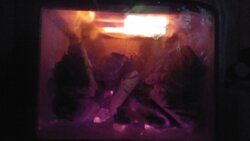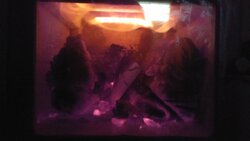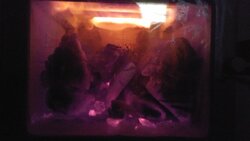You will run better with a 6" liner...even more so if it is insulated. My Tundra does OK on a 8" insulated liner in a 27-28' tall chimney...but I do notice draft start to die off above 40*. My other stove is on a 6" insulated liner, only 17-18' tall, and it will still draft OK clear up to 60*
Well, I have wrestled with the whole baro, or not, issue...Yukon says that you absolutely have to use one on their stuff (they run a pretty low draft, -.o3" WC) so I started out with one, but over time I have gotten away from using it most of the time. I still have it installed, but I keep it covered with HD aluminum foil unless I see draft getting high, then I will use it. I had to use it a few weeks back when we had the real cold spell there.
I like to use a key damper instead because of the creosote potential with a baro (which is less running a clean burning Tundra...and using real dry wood) but the key damper makes me nervous if I am allowing the tstat to control the intake damper...if heat is called for later in the burn, when draft is already dying down, and then the intake damper opens, with the key damper closed...potential CO in the house, not good! That's why SBI says not to use them.
How's that for a convoluted answer?!







 ), it filled the entire furnace with huge rolling flames like I'd never quite seen it! lol. all that room instead of full of wood sure allowed big billows of flames to roll around. was cool but has only driven the house up like 2-3 degrees in a littler under and hour. I could of made it a little bigger with the real thin splits.. around 2" thick but wanted to be careful. I am sure even with the high limit set so low and fan coming on so soon if you loaded this thing full with lets say dry brush.. you could achieve damage or over draft and issues.
), it filled the entire furnace with huge rolling flames like I'd never quite seen it! lol. all that room instead of full of wood sure allowed big billows of flames to roll around. was cool but has only driven the house up like 2-3 degrees in a littler under and hour. I could of made it a little bigger with the real thin splits.. around 2" thick but wanted to be careful. I am sure even with the high limit set so low and fan coming on so soon if you loaded this thing full with lets say dry brush.. you could achieve damage or over draft and issues.

